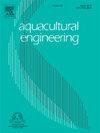卵形沙眼的短期深海网箱培养增加了抗生素抗性基因的流动性
IF 4.3
2区 农林科学
Q2 AGRICULTURAL ENGINEERING
引用次数: 0
摘要
抗生素耐药基因(ARGs)在近海海水养殖区已经得到了广泛的研究,但在深海网箱养殖环境中仍未得到广泛的研究。本研究采用环境参数测量、宏基因组组装和分组等方法,对深海网箱养殖前后ARGs的增殖、寄主和传播风险进行了研究。我们的研究结果表明,在水产养殖活动后,fosmidomycin-(一种靶向MEP途径的抗生素)、MLS(大环内酯类、lincosamides、链状gramines)、phenicol-和三氯生相关ARGs的丰度降低,而二氨基嘧啶-(干扰细菌叶酸代谢)、利福霉素-、氨基糖苷-(阻止细菌蛋白质合成)、多药ARGs和莫比罗星相关ARGs的丰度增加。从而增加了微生物获得耐药性的可能性。这些ARG的宿主被划分为19门38类,其中Gammaproteobacteria占所有ARG宿主的36.29 %以上,Alphaproteobacteria占所有ARG宿主的16.9 %。这些信息可以指导我们针对特定类型的微生物来控制特定的ARGs。某些ARGs主要位于质粒上,表明移动性增强,水平基因转移的风险增加。此外,在受水产养殖影响的水中,质粒、病毒或可移动遗传因子的存在普遍增加,进一步突出了ARG传播的环境风险。总的来说,本研究加深了我们对深海网箱养殖对环境影响的认识。本文章由计算机程序翻译,如有差异,请以英文原文为准。
Short-term deep-sea cage culture of Trachinotus ovatus increases mobility of antibiotic-resistance genes
Antibiotic resistance genes (ARGs) have been extensively studied in offshore mariculture areas, yet their profiles in deep-sea cage culture environments remain largely unexplored. In this study, the proliferation, hosts and spread risks of ARGs before and after deep-sea cage mariculture activities were investigated, employing environmental parameter measurements, metagenomic assembly, and binning approaches. Our results showed that following aquaculture activity, the abundances of fosmidomycin- (an antibiotic targeting the MEP pathway), MLS (Macrolides, lincosamides, streptogramines), phenicol-, and triclosan-related ARGs decreased, while diaminopyrimidine- (interfere with the folic acid metabolism of bacteria), rifamycin-, aminoglycoside- (prevent bacterial protein synthesis), multidrug-, and mupirocin-related ARGs increased, thereby increasing the likelihood of microorganisms acquiring resistance. The hosts of these ARGs were classified into 38 classes across 19 phyla, with Gammaproteobacteria accounting for over 36.29 % of all ARG hosts, and Alphaproteobacteria contributing an additional 16.9 %. This information can guide us in targeting specific types of microorganisms for controlling particular ARGs. Certain ARGs were predominantly located on plasmids, indicating enhanced mobility and an increased risk of horizontal gene transfer. Additionally, the presence of plasmids, viruses, or mobile genetic elements in aquaculture-affected water showed a general increase, further highlighting the environmental risk of ARG spread. Overall, this study deepens our understanding of the environmental impacts of deep-sea cage aquaculture.
求助全文
通过发布文献求助,成功后即可免费获取论文全文。
去求助
来源期刊

Aquacultural Engineering
农林科学-农业工程
CiteScore
8.60
自引率
10.00%
发文量
63
审稿时长
>24 weeks
期刊介绍:
Aquacultural Engineering is concerned with the design and development of effective aquacultural systems for marine and freshwater facilities. The journal aims to apply the knowledge gained from basic research which potentially can be translated into commercial operations.
Problems of scale-up and application of research data involve many parameters, both physical and biological, making it difficult to anticipate the interaction between the unit processes and the cultured animals. Aquacultural Engineering aims to develop this bioengineering interface for aquaculture and welcomes contributions in the following areas:
– Engineering and design of aquaculture facilities
– Engineering-based research studies
– Construction experience and techniques
– In-service experience, commissioning, operation
– Materials selection and their uses
– Quantification of biological data and constraints
 求助内容:
求助内容: 应助结果提醒方式:
应助结果提醒方式:


